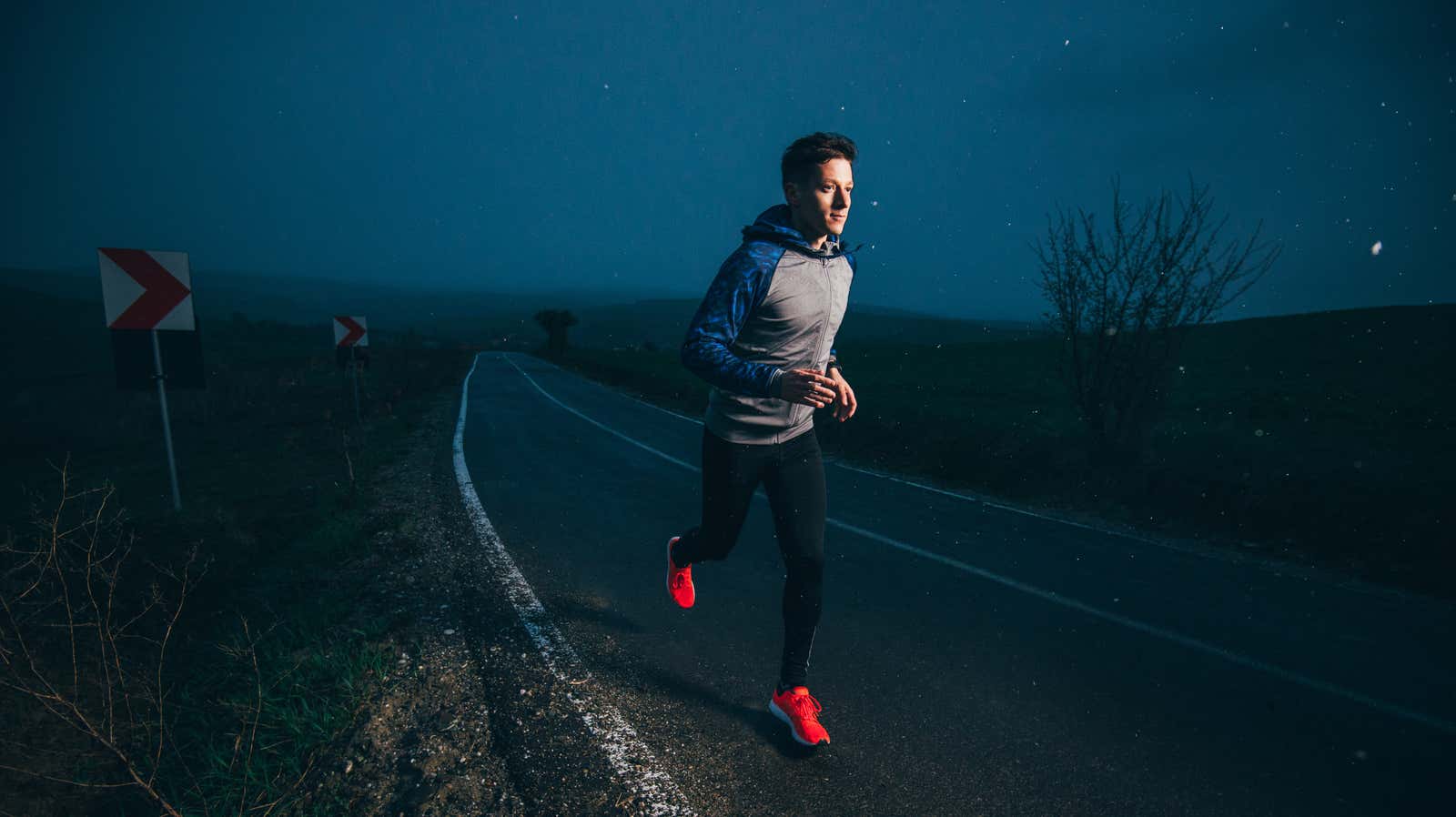How to Play Sports Safely in the Dark

Working out outdoors in winter often means exercising in the dark, whether you get up before dawn or get dressed after work when the sun goes down. This is not a problem if you know how to stay safe.
It will be cold
It’s colder at night than during the day, so don’t expect your predawn runs to be as warm as your midday runs. Check the hourly weather forecast with an app like DarkSky (don’t forget to look at the “apparent” temperature as well). Then check out our dressing advice to stay warm on your run.
If you are cycling, you will also have to deal with the wind. The goggles protect your eyes from the wind, and don’t forget to wear gloves as well. Consider using glove pads or windproof gloves.
Take a flashlight with you even if you’re not sure you will need it
I learned this the hard way when I was into trail running. If the sun was to go down at 6:00 pm, I would definitely have a flashlight in my pocket if I was in the woods any time after five. Because of all these hills and trees, the light started to fade long before the official sunshine time, and sometimes I was out longer than I expected. And when I lost even a little light, it became much easier for me to kick the roots and stones along the way. Now I always carry a pocket torch with me, even if I don’t think I’ll need it.
Even if you’re just walking in the neighborhood, it’s good to be noticed. I was in dark parks where I had no idea that there was another runner until they were right in front of me. Transference of some light can help you see people, but it can also help you not to intimidate everyone else.
Light is also important if you are cycling. It’s especially important to make sure cars can see you , so turn on your headlights and taillights even if it’s not completely dark. The convention (which is also a legal requirement in many areas) is to put a bright white light on the front of your bike and a red light for rear visibility. This tail light can be attached to your bike or other convenient location such as a jacket or helmet.
If you’re a runner, a flashlight is great, but a headlamp is often more useful. Whatever you’re using, know the battery life and make sure your flashlight is fully charged before you hit the road.
Wear reflective clothing.
Light colors are more visible than dark colors, while light neon fabrics will help you look brighter at sunset. But none of them can replace the reflective mechanism that shines directly on the light source, like the headlights of a car.
If you are cycling, your wheels and pedals may already have reflectors; otherwise, you can buy them at a bike store.
Sneakers and jackets often have reflective elements, but they are often small. Use a flashlight to see how reflective your gear is.
You don’t have to buy a fully reflective jacket or trousers, although this is a good option. Reflective spots on your head, body, and legs can help drivers recognize that you are a human-shaped object that they shouldn’t bump into. You can buy reflective tape to add to what you already have, or buy accessories like a reflective hat and reflective ankle tape or bracelets. You can also wear a high visibility reflective vest over anything you are wearing.
Stay safe
When you go out, pay close attention to your surroundings. This flashlight will help and it is best to work without headphones or keep the volume very low.
If you can, take a friend with you. In Before Times, I would suggest going somewhere with a cycling or running group; while COVID outbreaks break out, it’s probably best to stick with friends in your home. If you have a dog, you can probably teach it to run with you , but remember that over time it may need to improve its fitness to keep up.
Run on the right side of the road (left, facing the traffic) and watch your surroundings. Before leaving, plan your itinerary to make sure you don’t go where you are uncomfortable. Jogging at night is not the best time to get lost in an unfamiliar area or not know if there is a safe crossing over a busy road.
For added reassurance, make sure someone knows where you are. Every time I run to a new location or trail, I use Google Maps’ location sharing so that my husband can find me in case of an emergency. (Call me restless, but I have visions of falling off a hill and breaking my leg. That, of course, never happened.) You can set up a similar feature on your iPhone using Find My Friends.